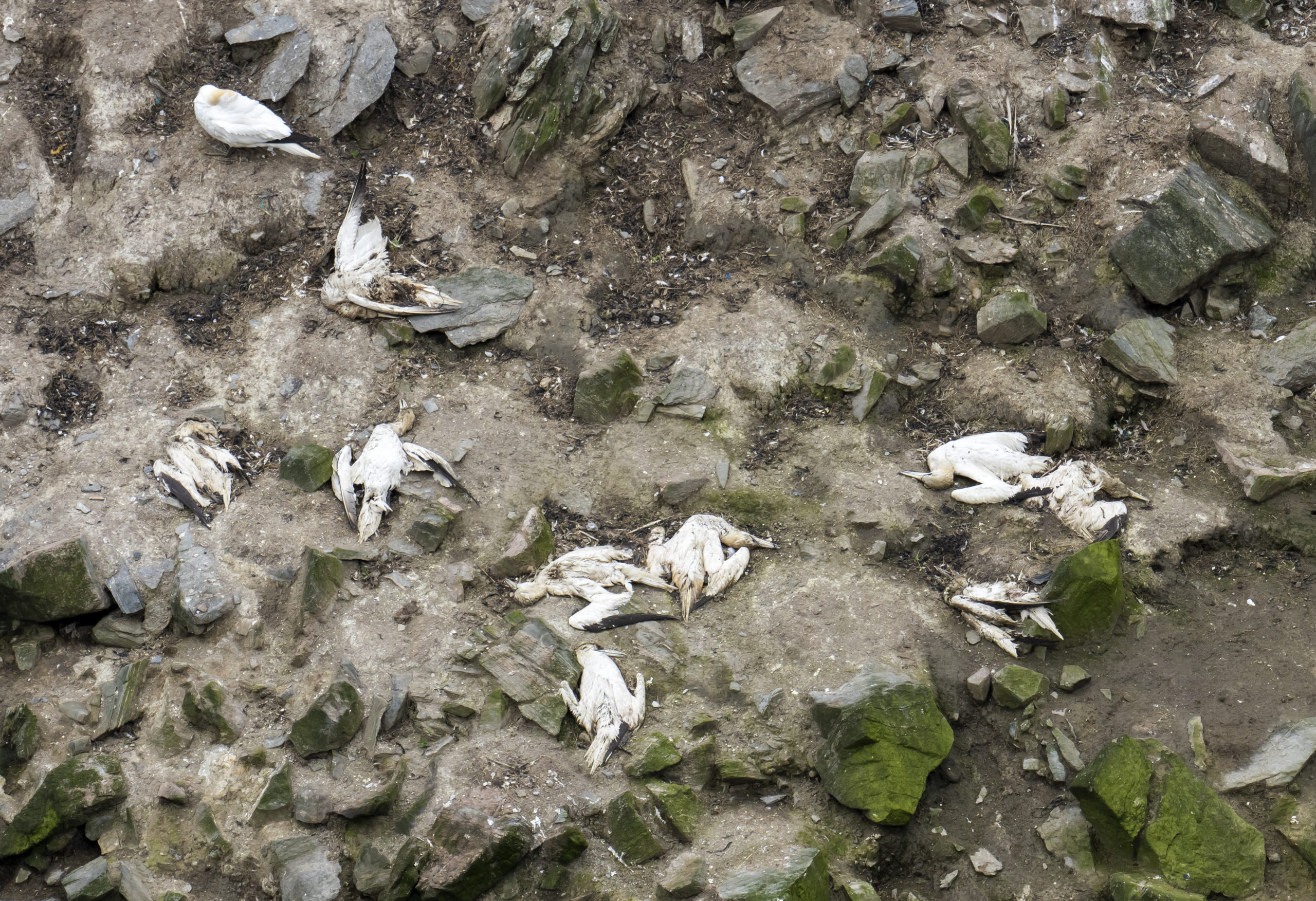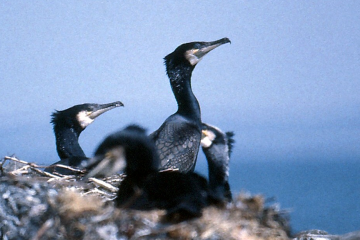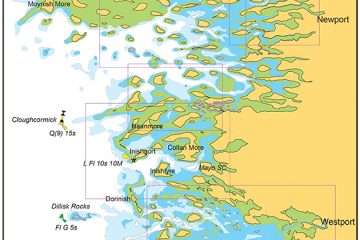by Bob Brown
In our last issue I reported on the virulence and devastating impacts of H5N1 virus or avian flu on our seabird populations, notably on gannets, great skuas (bonxies), and wintering geese, but also many other species. I’ve had trouble finding very recent reports or predictions on the internet but an RSPB update from December reports continuing small outbreaks, widespread about the British Isles, and a worrying escalation of infected barnacle geese in Scotland. They also flag up a warning about our breeding seabirds, soon to arrive on our shores.

Gannets that have all died as a result of avian flu bar one that is ill, Hermaness, Unst, Shetland, July 2022. Credit- Ashley Cooper (rspbimages.com)
As I reported, the highly infectious virus thrives in dense seabird colonies, with devastating effects. We’ll soon be out and about around our own coasts and elsewhere, often offshore from colonies, and we can make a major contribution to knowledge and management of the disease.
Please report any sightings that seem to you to indicate a colony, or even individuals are infected, but don’t go near them or worse, handle any sick birds. Signs to look out for include:
lethargy,
unable to lift head or wings,
various combinations of gaping, coughing, sneezing and diarrhoea,
bird stumbles around, or swims erratically in circles,
and, of course, death.
There are other signs too, check out https://www.gov.uk/guidance/avian-influenza-bird-flu#signs-of-bird-flu. Report any sightings to the relevant government administration according to where you are (I think they all have websites for this purpose), or to Birdwatch Ireland or RSPB.


